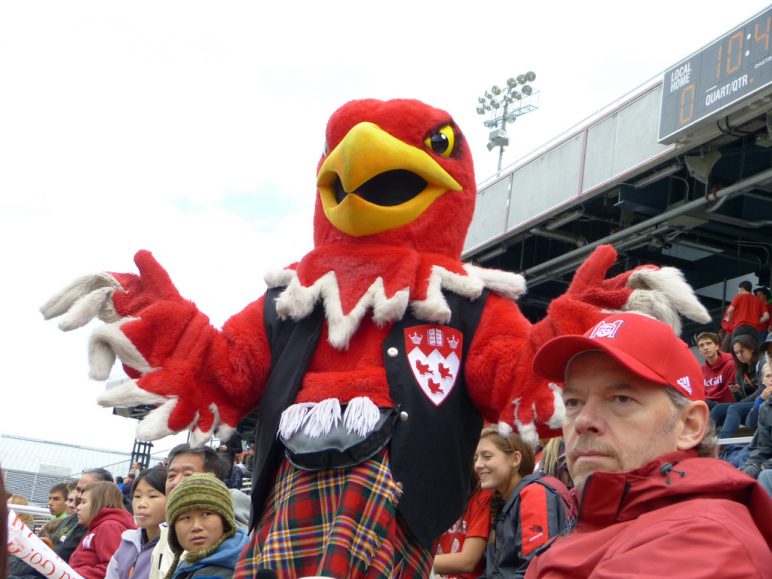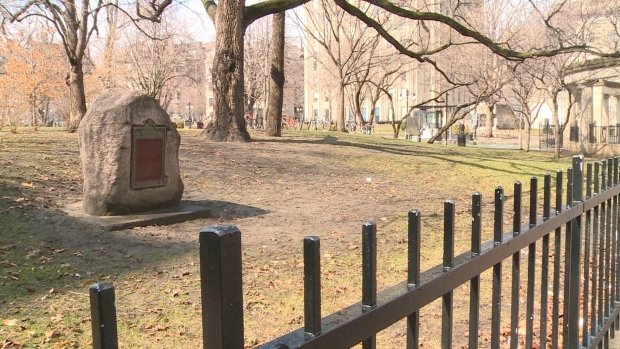Author: Marc Cataford
The Institute of Islamic Studies is founded.

Some McGill athletic teams begin to use Indigenous people as their mascots.
McGill Law and Political Science professor John Humphrey drafts Universal Declaration of Human Rights.
Translated into 321 languages and dialects, the Universal Declaration of Human Rights was adopted by the United Nations General Assembly on December 10 1948 and represents the first global expression of a set of rights to which all human beings are inherently entitled. While the declaration is not legally binding, its articles have been elaborated in subsequent international treaties and it is the most cited legal document drafted by a Canadian.
John Humphrey was asked to work with a committee of the United Nations Secretariat to help the organization draft a statement on human rights. Humphrey created a 400-page blueprint that became the foundation of the Universal Declaration of Human Rights as well as the declaration itself. He acted as the Director of the United Nations Human Rights Division for 20 years before returning to McGill in 1966, where he served as a Professor of Law and Political Science. Humphrey’s contribution to the Declaration was unacknowledged until later on in his life – a French delegate was thought to have drafted the document. It was the discovery of the first draft in Humphrey’s handwriting that led to his belated recognition and him eventually be awarded the United Nations Prize for human rights advocacy on the 40th anniversary of the United Nations. Humphrey was also involved in international efforts to investigate human rights abuses in the Philippines and represented Korean women forced to act as sex slaves to Japanese soldiers in World War Two.
McGill’s wartime administration excludes students of Japanese descent.
Maude Abbott is the first woman admitted to the Faculty Club.
Women are allowed to occupy SSMU positions.
Leonard Marsh becomes head of the McGill Social Science Research Group.
McGill administration takes measures to limit the number of Jewish students admitted to McGill.

The Hochelaga Rock is placed on the lower field, acknowledging the history of McGill’s land.
Hochelaga was an Iroquois village, likely situated near where McGill campus is today, documented by Jacque Cartier on his voyage to Canada in 1535 but found abandoned in a subsequent French expedition in 1600 (see 1553 entry above for more information). The site of Hochelaga was designated a national historic site by the Advisory Board for Historic Site Preservation in 1920. In 1925, a memorial stone referred to as the Hochelaga Rock, a remnant of Hochelaga, was laid on the lower field of McGill to commemorate the village. The plaque on the monument states:
“Near here was the site of the fortified town of Hochelaga visited by Jacques Cartier, in 1535, abandoned before 1600. It contained fifty large houses, each lodging several families, who subsisted by cultivation and fishing.”
Writer and comedian Stephen Leacock was asked to speak at the monument’s unveiling ceremony because he had published The Mariner of St Malo, a book about Cartier’s voyages, ten years earlier. In this book however Leacock disparages every act of kindness Hochelaga’s residents are said to have done for Cartier. He frames their offering gifts, providing practical advice, and caring for tired sailors as acts of submission to European supremacy. During the ceremony, Leacock explained that the scale of Hochelaga described by Cartier was impossible and beyond the capacity of the Iroquois, concluding: “Hochelaga is like the farmer’s giraffe. No such animal.” Leacock’s speech clearly revealed that he had not studied Cartier’s account and was misinformed in even the most basic facts, picturing log cabins instead of Iroquoian bark-covered longhouses.
The relocation of the monument from its little known place on campus to a more visible location across from the James McGill statue was first proposed to the administration by student leaders, faculty, and concerned community members. Initially their request was rejected due to reasons like insufficient funds, Parks Canada regulations, and concerns over the monument being “too visible” if it were across from the James McGill statue. Finally in 2016, former McGill professor Michael Loft contacted provost Christopher Manfredi about moving the rock in the wake of the Truth and Reconciliation Commission recommendations that suggested increasing Indigenous presence at educational institutions. The rock was moved over the summer and commemorated with a ceremony featuring McGill administration and Indigenous community leaders. This move coincides with the launch of McGill’s task force on Indigenous education and Indigenous studies, which works on attracting Onkwehón:we students from across Quebec to the university and increasing Indigenous faculty, presence, space and support throughout the university.

